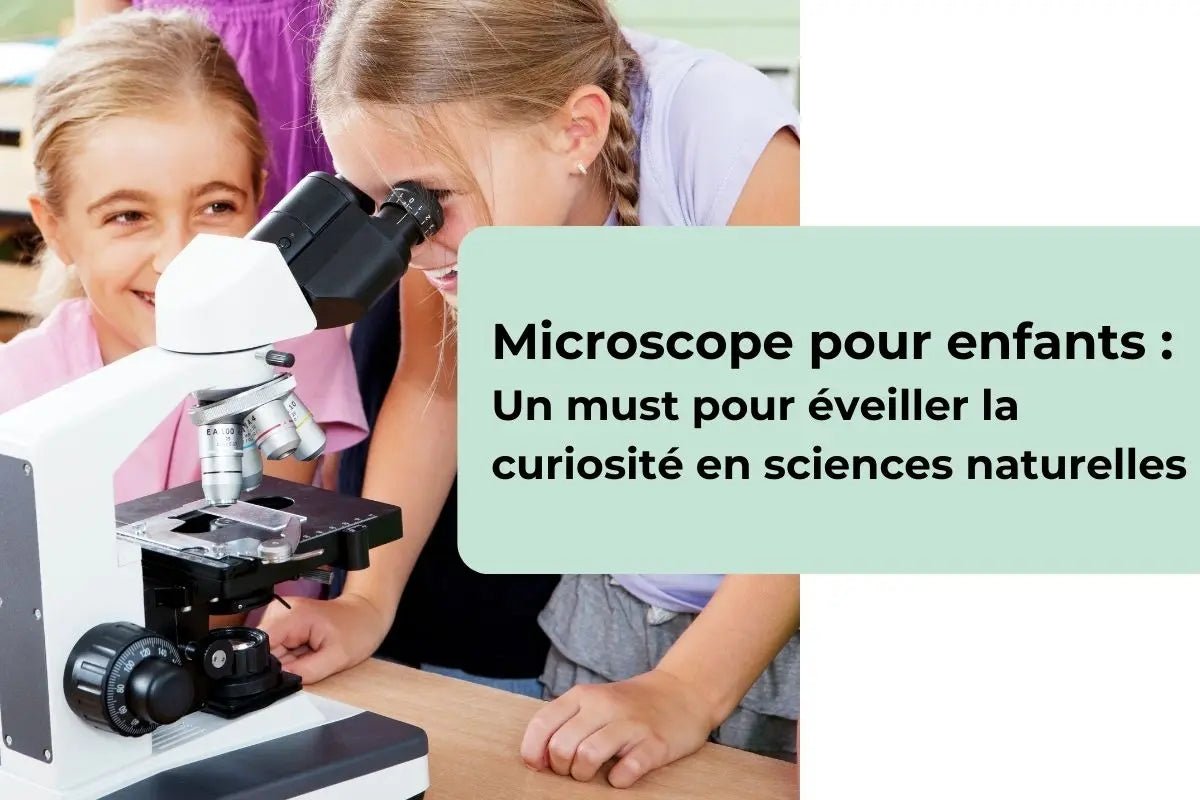
Microscope for children: a must to awaken curiosity in natural sciences
The children's microscope is a fascinating tool that encourages the exploration of natural sciences. By allowing young scientists to delve into the microscopic universe, this device offers them a unique chance to discover the world from a new perspective. Whether observing cells, tissues or small organisms, an age-appropriate microscope can stimulate their curiosity and desire to learn.
Why a Microscope is Essential for Kids
Development of scientific curiosity
A children's microscope, such as the ScientiZoom™ , helps develop scientific curiosity in young children. By looking at samples, they are able to ask questions and search for answers, which is fundamental to the learning process. The ability to see things invisible to the naked eye makes them want to understand the world around them.
Encouragement for experimentation
With a microscope, children can experiment with different samples, learning how to handle scientific instruments. This teaches them the scientific method from a young age, showing them how to formulate hypotheses and draw conclusions. This hands-on approach is essential for effective science education.
Features of a good children's microscope
Simplicity and safety of use
A microscope for children should be both simple and safe. Models like the ScientiMax™ are designed to be easy to use, with intuitive controls. This helps prevent frustration with a complex device, which could discourage learning.
Clear vision and improved details
Children's microscopes must provide a clear view of samples. The quality of the lenses is crucial to allow detailed observation, making the learning experience more enriching. Models with powerful zoom, such as the ZoomPro™ , offer increased exploration possibilities.
The educational benefits of the microscope
Active learning
Using a microscope allows children to learn through experience. Instead of just reading theoretical material, they immerse themselves in direct exploration, which promotes better knowledge retention. This active learning is essential for developing science skills while having fun.
Technical skills development
- Sample handling
- Understanding observation techniques
- Introduction to the concepts of biology and chemistry
The technical skills acquired while using a microscope will provide a foundation for future studies in science. For example, they will learn how to prepare specimen slides and use focus settings correctly.
How to Choose the Right Microscope for Your Child
Age and skill level
It is essential to consider the child's age and skill level before purchasing a microscope. Models like the ScientiZoom™ are ideal for young beginners, while more advanced options are suitable for older children with some experience.
Types of microscopes available
There are different types of microscopes for kids, including optical and electronic models. Electronic microscopes, like the ZoomPro™ , offer advanced features like split screen and digital zoom, ideal for more in-depth explorations.
Conclusion
Having a microscope for kids is more than just a gadget. It is a tool that cultivates curiosity and interest in natural sciences. By providing an interactive learning platform, microscopes allow children to become budding researchers. From observing cells to discovering microorganisms, the benefits are endless. Investing in a good microscope is a key step in encouraging young minds to explore and understand the world around them.







